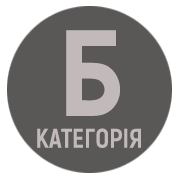Reflective thinking in the ESL classroom
DOI:
https://doi.org/10.32782/2617-3921.2025.27.419-427Keywords:
reflective thinking, thinking process, critical thinking, analyzing, English as a second language, classroom, teacher, studentAbstract
The article is focused on the analysis of reflective thinking and why it should be applied in the ESL classroom. Reflective thinking plays a crucial role in the English as a Second Language (ESL) classroom, facilitating both teaching effectiveness and student learning outcomes. It encourages teachers to critically analyze their instructional strategies, classroom interactions, and students’ progress to make informed decisions for improvement. Reflective thinking fosters metacognitive awareness, enabling ESL learners to evaluate their language learning processes, identify challenges, and develop effective strategies to enhance their proficiency.One of the key aspects of reflective thinking in the ESL classroom is self- assessment. Teachers who engage in reflective practice continuously assess their lesson plans, teaching methodologies, and student engagement. They may use journals, peer observations, or video recordings of their lessons to analyze their teaching practices. This process allows them to recognize areas for growth and adapt their approaches to meet the diverse needs of students. Similarly, students benefit from self-reflection by identifying strengths and weaknesses in their language skills. By keeping learning journals or participating in guided discussions about their progress, they become more aware of their learning styles and develop self-regulated learning habits.Another important element is feedback and dialogue. Encouraging students to engage in reflective discussions about their learning experiences enhances their ability to articulate thoughts in English while refining their critical thinking skills. Teachers can integrate reflection through structured activities such as think-pair-share exercises, peer reviews, and class discussions. These activities provide students with opportunities to analyze their learning progress, set goals, and explore new ways of improving their language skills.Furthermore, reflective thinking in the ESL classroom supports a growth mindset, promoting resilience and motivation among learners. When students reflect on their experiences, they recognize the value of persistence and effort in language acquisition. Teachers can foster this mindset by modeling reflective behavior, sharing personal learning experiences, and encouraging students to view mistakes as opportunities for growth rather than failures.Incorporating reflective thinking into the ESL classroom benefits both teachers and students, leading to a more dynamic, student-centered learning environment.By cultivating self-awareness, critical analysis, and continuous improvement, reflection enhances the overall effectiveness of language education and prepares students for lifelong learning.
References
Dewey J. Experience and Education. New York: Macmillan Company, 1938. 91 р.
Gibbs G. Learning by Doing: A guide to teaching and learning methods. Further Education Unit. Oxford Polytechnic: Oxford, 1988. 129 р.
Mezulis A. Rose Bud Thorn: Great icebreaker activity for interacting with teens. Joon, 2023. URL: https://www.joon.com/blog/rose-bud-thorn (дата звернення: 29.01.2025)
Rolfe G., Freshwater D. & Jasper M. Critical reflection for nursing and the helping professions: A user’s guide. London: Palgrave Macmillan, 2001. 194 p.



